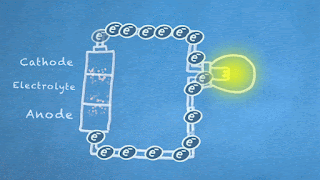Katherine Johnson, one of NASA's human computers
If you ever saw the 2016 movie Hidden Figures, you will have seen part of the story of Katherine Johnson. She was portrayed with two other Black women who worked for NASA in the very early days. They all played important roles and yet were lost to history and the cultural ways of that time. None of them should be forgotten, and this blog entry will describe Johnson's life and contributions as a "human computer".
She was born Katherine Creola Coleman on August 26, 1918 in the state of West Virginia, USA. She was extremely bright and talented with math from an early age. Because the county where she lived did not provide high school to Blacks after the eighth grade, she had to enroll elsewhere (120 miles away)... at the age of 10! She is quoted later in life as saying this about her childhood:
“I counted everything. I counted the steps to the road, the steps up to church, the number of dishes and silverware I washed … anything that could be counted, I did.”
After skipping grades, she graduated high school at 14. She then enrolled in West Virginia State College, a school for Blacks, and not only took every course in mathematics that they offered, but her mentor created additional math courses that she could take. He once asked her why she asked questions in math classes, because he knew she already had the answers. She said she could see other kids wanted to ask but were too afraid, so she asked for them. Katherine graduated in 1937 summa cum laude (top 1-5% of her class) with bachelor's degrees in mathematics and French. Not bad when you consider only 2% of Black women of that time earned college degrees!
She taught in public school for 2 years, got married (secretly, so she could keep her job), joined a graduate school program in math, and then stopped to raise a family and returned to teaching for a short time when her children got older. During that time, she and her husband Jimmie Goble needed to work extra jobs, so Katherine took on maid work in the summer.
Time to review a little aviation history.
The history of flight includes the use of kites and balloons decades and even centuries before airplanes. Orville and Wilbur Wright had made the first powered airplane flight in 1903, and shortly thereafter, World War I began. Manned kites and reconnaissance balloons were used to spy on artillery locations then (and much earlier), and planes were used as early as 1911 to shoot them down.
But the U.S. was behind in European technology for aircraft, funded even less than Greece or Bulgaria, so in 1915, it created NACA (National Advisory Committee for Aeronautics). It began with fewer than two dozen people from the government, military, and industry. Its charter stated that its goals were to "supervise and direct the scientific study of the problems of flight, with a view to their practical solution."
The Ames Aeronautical Laboratory became a second NACA lab in 1939 and was established in Moffett Field, California to to develop and improve American aircraft during World War II. Part of the work at the Ames lab was testing wind tunnels on proposed aircraft.
Until 1935, NACA had employed only men to do all of its mathematical calculations. They were known as "computers", not in the sense of being machines but in that they could perform computations very well and fast. But NACA soon found that women could do the job faster and more accurately, so in 1935 the first one of five, Virginia Tucker, was hired. Tucker soon helped in recruiting more, and by 1942 NACA has 75 female computers on staff. By 1946, there were 400.
Katherine (now Goble not yet Johnson) heard from a family member about openings in NACA's Black women's group of mathematicians. She didn't get in on the first try because the quota for Black women had been filled, but a year later in 1953, she was hired to work in the Langley Memorial Aeronautical Laboratory in Hampton, Virginia. Oddly enough, Black women needed college degrees and high GPAs to get hired, but the white women did not.
This was also the time of the Cold War between the U.S. and Russia. The pressure was on to perform well. Aeronautical engineers and test pilots depended heavily on these human computers to calculate and check work.
As an example of Katherine's ability, within 2 weeks of being hired, she was asked to attend a meeting and review some calculations. She found an error and was commended for it. When asked years later about the women computer staff, she said that men didn't have the patience that women did!
Although NACA insisted it had no problems with equal opportunity insisted on by President Roosevelt, the Black women worked in the west wing of the facility and so were called the "West Computers". Despite that, Katherine was very outspoken and refused to abide by NACA's whites-only rules about bathrooms and cafeterias. She was commonly seen discussing details from aviation magazines with white male colleagues. As she said in a book Reaching for the Moon,
"I didn't allow their side-eyes and annoyed looks to intimidate or stop me. I also would persist even if I thought I was being ignored. If I encountered something I didn't understand, I'd just ask. … I just ignored the social customs that told me to stay in my place."
Her husband died of brain cancer in 1956, but when the USSR launched Sputnik in 1957, the outlook on NACA's worth intensified. She frequently went home after work to see her children, then return to work until late at night. This YouTube clip from the movie The Right Stuff puts into perspective in a dramatic and slightly tongue-in-cheek fashion just how the U.S. viewed the new battle in the Cold War and the importance of jobs like Katherine's.
Meanwhile, Katherine married James Johnson in 1959; he had served 2 years in the Navy and then fought in the Army as an officer during the Korean War.
As NASA made plans to put a man in space, their first attempt was a sub-orbital flight (just reaching space and then coming back down) with Alan Shepard aboard. Katherine calculated the trajectories for that in 1961. She also verified the calculations that machine computers had made for John Glenn's orbit around Earth in 1962. (The movie has a scene where she came up with the idea of using an old formula to solve the problem of calculating trajectory as it switched from an elliptical shape to a parabolic one.) Keep in mind that at this time, people relied on slide rulers, adding machines, formulas in books and their heads, and simple geometry tools like compasses, rulers, and triangles. Mechanical computers such as those from IBM were barely in place and not entirely trusted. In fact, before John Glenn lifted off, he asked specifically for Johnson to check the machine calculations: "Have the girl check the numbers...If she says they’re good, then I’m ready to go.”
When it came time to send astronauts to the Moon, she computed the trajectory of Apollo 11 and how to dock the orbiting Columbia with the Eagle moon lander. Afterward, she assisted in the critical plan to save Apollo 13's crew during their mission. Here is an example of the flight paths that involve multiple calculations to solve for Apollo 11. (click to see bigger picture)
As the movie title's name suggests, people like Katherine Johnson were truly hidden from public view. It wasn't until 2015 that Johnson was recognized by President Obama with the U.S. Presidential Medal of Freedom for her work on Glenn's flight.
During her time at NASA, Johnson also worked on project such as the Space Shuttle and the Earth Resources Technology Satellite (ERTS, later called Landsat). Although she published 26 scientific reports, the first one was the most difficult to achieve because women weren't allowed. In 1960, she wrote the bulk of a paper regarding placement angles for a satellite with engineer Ted Skopinski, who suggested her name be on it. It was the first time a woman in the Flight Research Division had gotten her name on a paper.
Katherine retired from NASA in 1986 saying, “I loved going to work every single day.” And in 2016, NASA named its new computing facility after her. When asked what she thought at the ribbon cutting ceremony, humble 99-year-old Johnson replied, “You want my honest answer? I think they’re crazy,”





















































